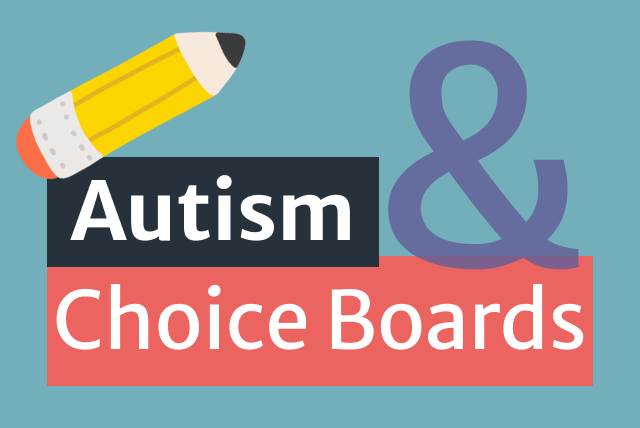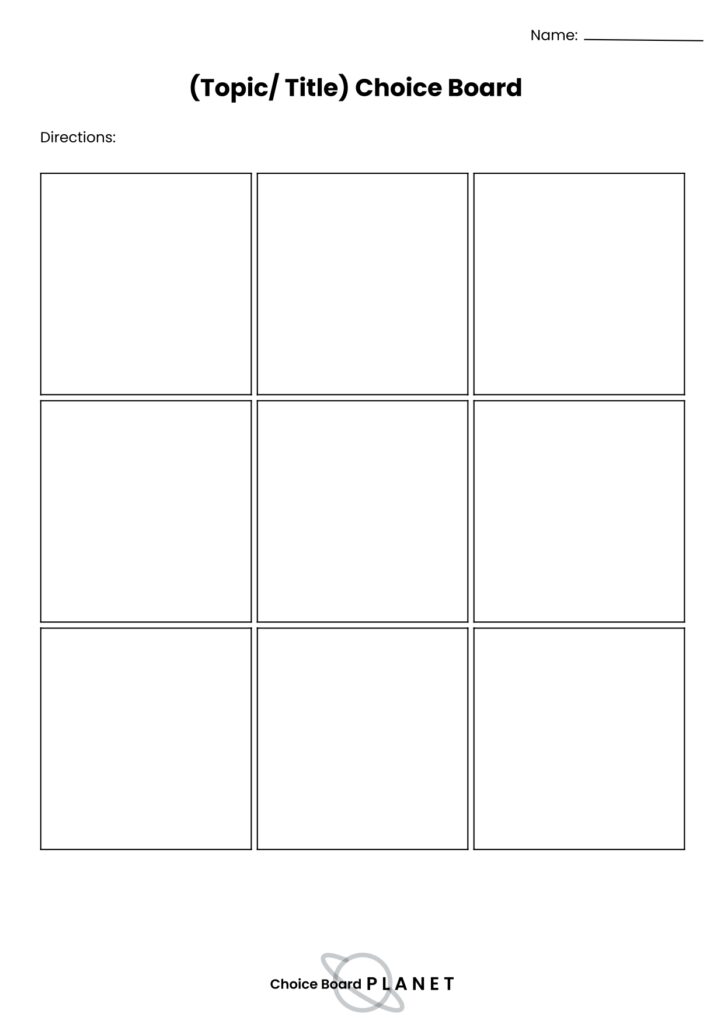Grade school children with autism can greatly benefit from choice boards. Easily identifiable outcomes paired with their ability of control can facilitate a better learning experience for everyone involved. Your Choice Boards for Autism need to be specific, time bound, and location dependent.
At home, you can use the concept of choice to give the child control while still moving towards a beneficial outcome.
In-School, choice boards can be utilized to have all students have their own options while still maintaining control over the class. *preparation is everything!
These are ideas that need to be adapted to your specific use case. Every child will present differently so please consult a licensed psychologist about using these ideas.
Why Choice Boards are perfect for Autism
More often than not children with autism need a bit of control in their lives. Many times they are nudged, forced, and pushed to do activities or actions every day.
Choice boards allow them to select what they want to do from a graphical grid.
For example:
Would you rather play with your trucks, build with legos, or walk the dog with mom?
What would you like to do first? Brush your teeth, make your bed, or get dressed?

Admittedly, these examples are extremely simplistic. But i believe you get the idea. You can you choice boards to differentiate your instructions as a teacher or differentiate the rhythm of the day.
This is 100% dependent on your specific case, as the varying levels of ASD (Autism), will display differently, but here are a few options.
Levels of Autism
There are three identifiable levels of Autism (ASD – Autism Spectrum disorder) which have been categorized by Psychiatrry’s DSM-5. Read More About MSM-5 Here
Here is a quick categorization of the three levels of autism, how they present, and ideas regarding choice board theory to utilize.
| Level of Autism | How it displays | Choice Board Ideas |
| Level 1 ASD: Requiring Support | Struggle in social situations Probably communicate verbally. They may be able to have some relationships. Might struggle to maintain a conversation | Everyday Choice Boards can be utilized. Are able to have words and image combinations. Can be presented with a variety of different subject choices. |
| Level 2 ASD: Requiring Substantial Support | Their challenges in social situations may be more noticeable may or may not communicate verballyconversations may be very short or only on specific topics They may have routines or habits that they feel they must do and, if these get interrupted, they become very uncomfortable or upset. | Use Images to guide the educational moment. (ex. Play with trucks or play with legos.)Having fewer choices might benefit outcomes. Try not to overwhelm and force a choice, sometimes none of the options are desired. |
| Level 3 ASD: Requiring Very Substantial Support | Show significant difficulties with social communication and social skillsmany individuals with Level 3 ASD do not communicate verbally or may not use many words to communicatePeople with Level 3 ASD often struggle with unexpected events | This might be difficult to break a pattern when needed. Easy options that are easily identified. Consult a psychiatrist & the child’s primary caregiver before doing anything out of the ordinary. |
Medical News Today: Autism Ranking: Read More Here
Spectrum News: DSM 5 Redefines Autism – Read More Here
Setting up your choice boards
Make sure you have everything clearly defined. Ambiguity allows for interpretation of the outcome. If you are specific with the choices, then it’s much easier to allow “self-starting” using the choice board.
Simple Choice Example: Play with your truck in the living room for 5 minutes
- Action: This choice has the action of “Play”
- Location: The action is in the location of “living room”
- Duration: How long with this take place?.
FAQs
How many choices should I have?
I like to use 3-9 choices for each board. This way you have the option of covering a few up to only display 3 or showing 9 choices altogether.
Can I use choice boards for mealtime?
I would not suggest using a choice board for mealtime as you are setting a precedent for choosing the food they will eat. Sometimes that is, not an option.
Do children with autism need different choice boards?
Yes & no. Depending on what level of ASD. The lower the level the more likely you can use your original boards, but if they are two or three and have repetitive sequences, it might require the custom making of easy choices.
When things go wrong
Please remember that everything will not always go right. There will be tough days, there will be amazing days. Choice Boards should be used to help steer things towards those good days.
Autism is a huge variable to put on any teacher or parent please make sure you consider what is best for your child and consult a psychologist before implementing anything that could be stressful to your child.


